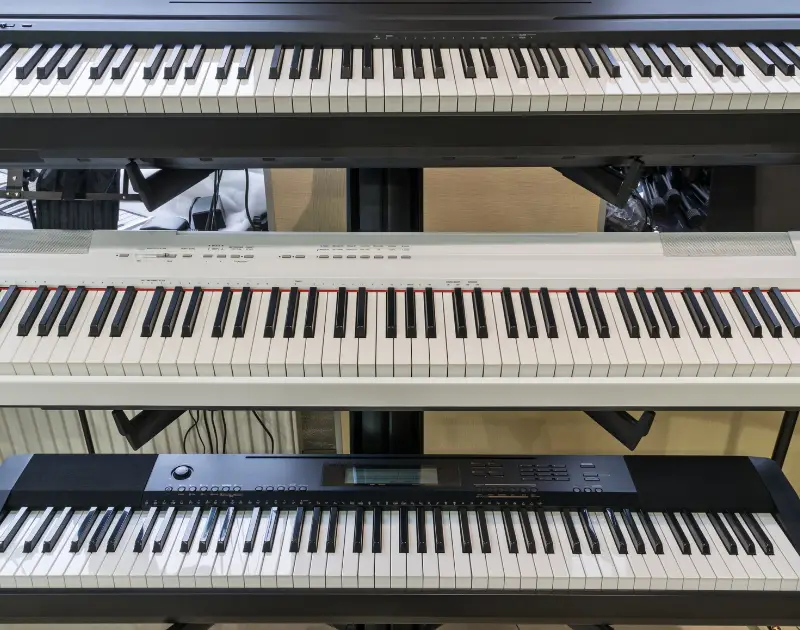There is nothing worse than buying the best digital piano with all the right specs, only to realise you don't like the colour or that it doesn't fit in your home colour scheme aesthetically.

Luckily, a coat of paint will fix this and give your digital piano a brand new look, just make sure you note new layers of paint might void your piano services warranty but can be done professionally by following the right preparation steps.
To achieve a beautiful painting job on your digital piano we have put together a detailed step by step guide below that will give you everything you need to know.
Let's get painting!
Piano lovers might find the prospect of painting their digital piano a little daunting, while you might need to carve out some extra time for this job, it doesn't have to be scary, so we have broken the basic steps down to do this painting job below.
The first and most timely step before you start painting your piano is to disassemble it, start this process by taking off all the loose knobs and dials on your piano, remove any screws, loose wires and put all the loose hardware somewhere you will remember with the screws in a cup.
Try taking a photo of each part of your piano when disassembling to make putting the piano back together much easier.
After taking your piano apart it is now time to start applying the primer. Putting primer on your piano beforehand will stop the paint chip and make your layer of paint more even.
To do this first make sure the surface of your piano is clean, lay down old newspaper underneath the piano to prevent any accidents and use your painter's tape to cover up places on the piano which you want to avoid painting.
After applying your first primer then put your second coat in the same way and allow it to dry fully before getting on to the painting step next.
Once your primer has dried you can now get to the fun part, painting! Start painting in long even strokes and build the colour up in thin coats, let each coat of paint fully dry on your piano before you go in for the second one.
To iron out any paint imperfections you can always sand lightly in between each coating for a smoother finish, make sure to do this in a well-ventilated place to stop so much paint inhalation.
Lacquer will stop your paint from chipping and fading away over the years, to apply this do the same as your painting method and use long even coats, make sure to cover all areas or you do risk the paint chipping in places where you didn't put the lacquer.
Allow to dry according to the manufactures stated time.
Now your digital piano has been repainted and has had its coat of Lacquer you can start to slowly reassemble the piano, look at the pictures you took beforehand for reference and start by replacing the hardware.
After replacing the hardware you can, connect the wires, screw everything back in where it belongs and replace the buttons and sliders.
Voila! You now have a newly painted piano.
Painting your digital piano is a pretty easy job, but there are a few tips/tricks which are worth knowing if you want to get the best finish on your piano.

To conclude, there is no reason as to why you can't paint your digital piano if you don't like the look of it, just make sure you follow the essential preparation steps to get the best finish and always take your time when painting.
Although we mentioned briefly how to disassemble and assemble your piano we would suggest following your pianos manual for a more detailed guide.